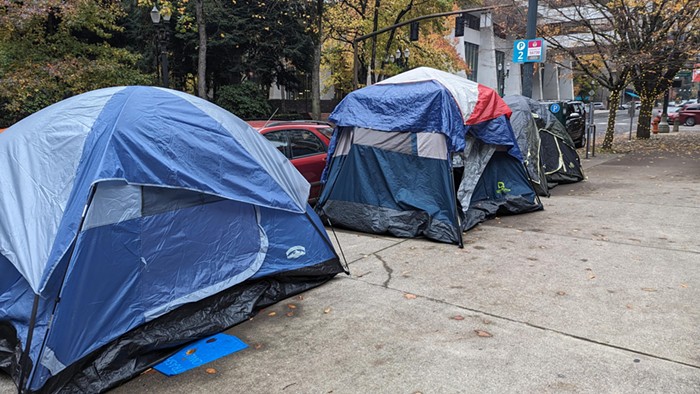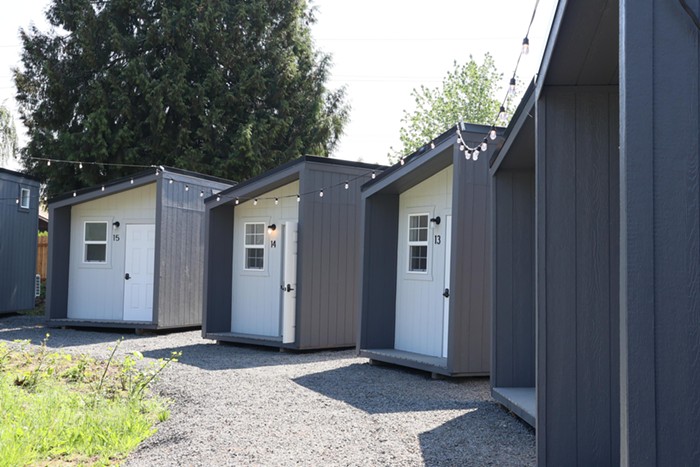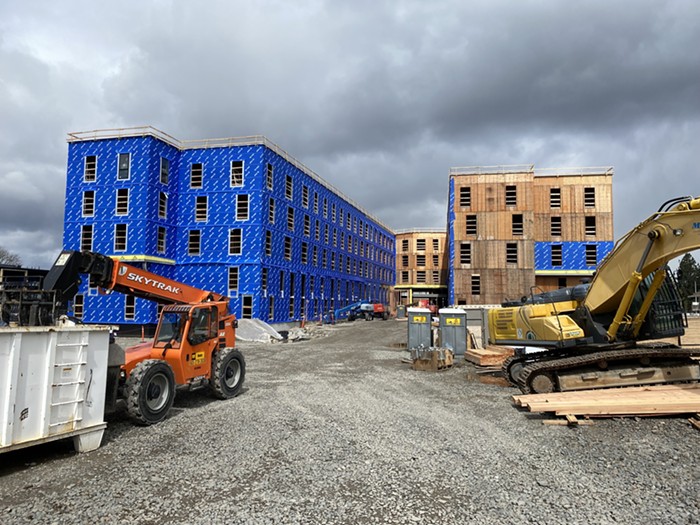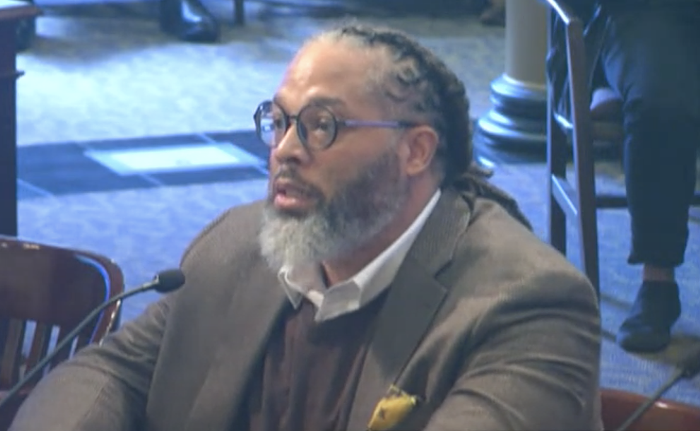THE NEW $148 million Eastside streetcar loop is pitched as a sustainable transportation project that promotes dense development while also promising Portlanders a sleek way to get around without driving a car.
But as jackhammers crack into the asphalt at NE Broadway and Weidler this week, some alternative transportation advocates fear the project is making the city worse for bikes.
There's no two ways about it: Streetcar tracks and bike wheels are not friends. Nearly 70 percent of Portland cyclists have crashed on the streetcar tracks, mostly because wheels fit devilishly well into the slotted tracks, according to an Alta Planning and Design study in 2008. Some cyclists are sounding the alarm that the new 3.3 miles of track, combined with a lack of signage, will cause more injuries.
Grassroots transit group Active Right of Way (AROW) released a list of "immediate safety concerns" about the current streetcar project in December and is meeting this week with the Portland Bureau of Transportation.
At the top of the group's list of concerns are the new tracks on NW Lovejoy. Heading west on Lovejoy from the Broadway Bridge, big arrows and a green bike lane direct cyclists to a new route up NW Marshall. But heading east, the city's way-finding signs still direct bikes to take Lovejoy. Cyclists who follow the familiar route will get a shock when the bike lane abruptly disappears from the street on NW 13th, freshly ground off, only to get stuck in a dangerous squeeze a few blocks later when the curb bumps out to meet the tracks.
"Lovejoy is marked as a bike route on every bike map," says AROW member Steve Bozzone. "It's the first time I can think of that the city has decommissioned a bike way without alerting cyclists."
Other safety issues involve weeks-long construction detours in the Lloyd District that will force cyclists to use the sidewalk. While the construction is temporary, it will continue citywide until 2012.
Bikeportland.org Editor Jonathan Maus agrees with AROW that the missing signage on NW Lovejoy illustrates that bikes are often an afterthought for the streetcar project.
"One of the reasons no one on the bike side will talk bad about it is, 'Hey, it's not cars, it's green transportation and we're all in this together,'" says Maus. "But the city basically decommissioned Lovejoy for biking. They're absolutely shutting off a main artery for accessing downtown."
Portland Bureau of Transportation spokesman Dan Anderson says temporary signs for bicyclists were up for the first month after Lovejoy's bike lane was removed and that the city is evaluating whether to put in permanent ones.
Catherine Ciarlo, Mayor Sam Adams' transportation director, says the streetcar is "learning from its past mistakes" with regard to bikes. The new loop tracks take over the left lane of streets, for example, rather than the right lane where bikes are legally obligated to ride.
"What streetcar is about is creating denser land uses, a city that is better served by streetcar will be better for bicyclists," notes Ciarlo.
The streetcar currently carries 12,000 riders every day, while the US Census estimates that 17,500 Portlanders bike to work daily.



















